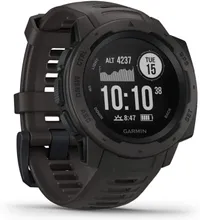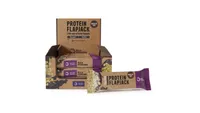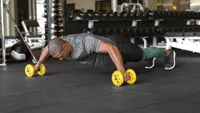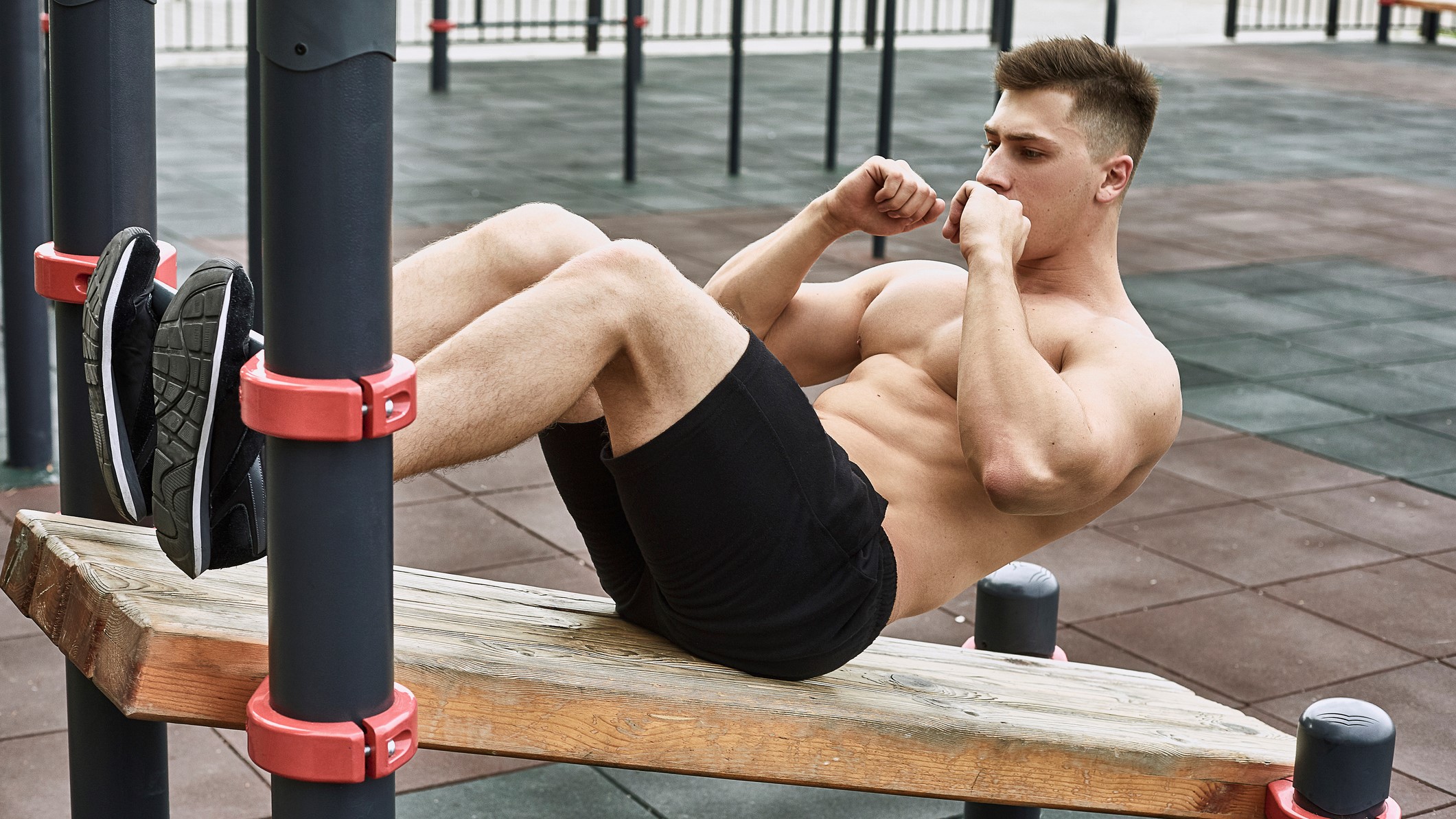

The Navy SEAL workout is tough, because being a Navy SEAL is a tough business. The workout we are going to discuss here uses your body only as resistance and therefore classifies it as a calisthenics workout. It also relies on endurance more than counting sets and reps. In fact, you won't even need to count reps; the only thing you might want to check is the time.
• See how it compares with this SAS workout
Here, we will talk about the Navy SEAL fitness test and how you can benefit from getting ready for it, even if you aren't planning on joining the US military. The test requires you to do as many reps as you can in the set time interval and therefore is perfect to build muscles and endurance, as well as torching fat.
If you prefer something a little less gung ho, there are plenty of ways to lose weight fast and build muscle at the same time. For example, you can do a push-pull workout or even a five-move full body workout. In general, the more muscles you move, the more calories you burn, so if weight loss is your aim, try doing more compound exercises, like deadlifts and squats.
What is the Navy SEAL fitness test?
As part of the test, you will need to perform five different exercises within a set amount of time. The requirements are as follows:
- Swim 500 yards (457 metres) under 12 minutes and 30 seconds (competitive standard – 8 minutes)
- Do 50 pushups in 2 minutes (competitive standard – 80-100 pushups in 2 minutes)
- Do 50 situps in 2 minutes (competitive standard – 80-100 situps in 2 minutes)
- Do 10 pull-ups (competitive standard – 15-20) – no time limit
- Run 1.5 miles (2.4 km) in under 10 minutes and 30 seconds (competitive standard – 9-10 minutes)
What is great about this test that it measures the fitness levels of your whole body. You'll need a strong back and shoulders for the swim, monster pecs and triceps for the pushups, rock hard abs and core for situps, godly lats and biceps for the pullups and swift quads, calves and glutes for the run.
Another good aspect of the test is that it's time limited and bodyweight only: you won't have to count weights and volume here, just do as many reps as you can within the set time. Doesn't get less complicated than that.
Get all the latest news, reviews, deals and buying guides on gorgeous tech, home and active products from the T3 experts
Due to the high rep count, working out using this method is not all that dissimilar to doing CrossFit, for example, and builds endurance as well.
- This SAS endurance workout will build strength and also melt fat off your body
- Firefighter workout: get firefighter fit with this full body workout
Garmin Instinct rugged GPS smartwatch | Sale price £220 | Was £269.99 | Save £50 at Amazon
Constructed to U.S. Military standard 810G for thermal, shock and water resistance, the Garmin Instinct is built for the Great Outdoors, for explorers who aren't afraid to get muddy and get their hands dirty when out in the wild. The integrated 3-axis compass and barometric altimeter, plus multiple global navigation satellite systems (GPS, GLONASS and Galileo) will get you where you want to be and back in one piece.

Protein brownies are a great source of protein and carbs, as well as being low on sugar and fats
Eat right to gain right
If you want to build muscles and lose fat, you will need to eat right, no question about it. Even if your aim is to lose weight doing this exercise, you will need to get a better understanding of what you eat and most importantly, how much carbs, fats and protein do you consume a day.
If it sounds daunting and a lot of hassle to count macros, it really isn't. There are free apps that literally tells you what's in the food you eat by scanning the barcode of the product, such as MyFitnessPal. Once you know what's in it, you can decide whether you need that last slice of large Dominos pepperoni pizza (you don't).
Either you are trying to lose fat or want to build muscle, eating more protein is beneficial for you. If you fall in the former category, try swapping some bad fats and carbs – most of the processed food falls into this category – to protein snacks, let them be protein bars or just a small portion of high-carb nuts.
If you are trying to gain muscle mass and are naturally skinny, try adding some high protein mass gainers, like Bulk Powders' Informed Mass or The Protein Works' Total Mass Matrix.
Drinking more water also helps, so fill up your gym water bottle and drink that water!
Bulk Powders Protein Flap Jack, box of 12 | Sale price £12.99 | Was £19.99 | Save £7 at Bulk Powders
The Bulk Powders Protein Flap Jack not only tastes amazing but it also has 21 grams of muscle building protein in each 85-gram bar as well as loads of fibres too. Choose from three equally as delicious flavours: Chocolate Chip, Golden Syrup and White Chocolate Berry. A bit on the sugary side so be careful not to eat the whole box in the one sitting!
- Best protein powder: build muscle, lose weight and aid recovery with the best whey and vegan protein powders
- Best cheap creatine deals: boost your performance and focus with cheap creatine monohydrate
- Best recipe box: meal kits for keto, paleo, weight loss, healthy eating and great fresh flavours
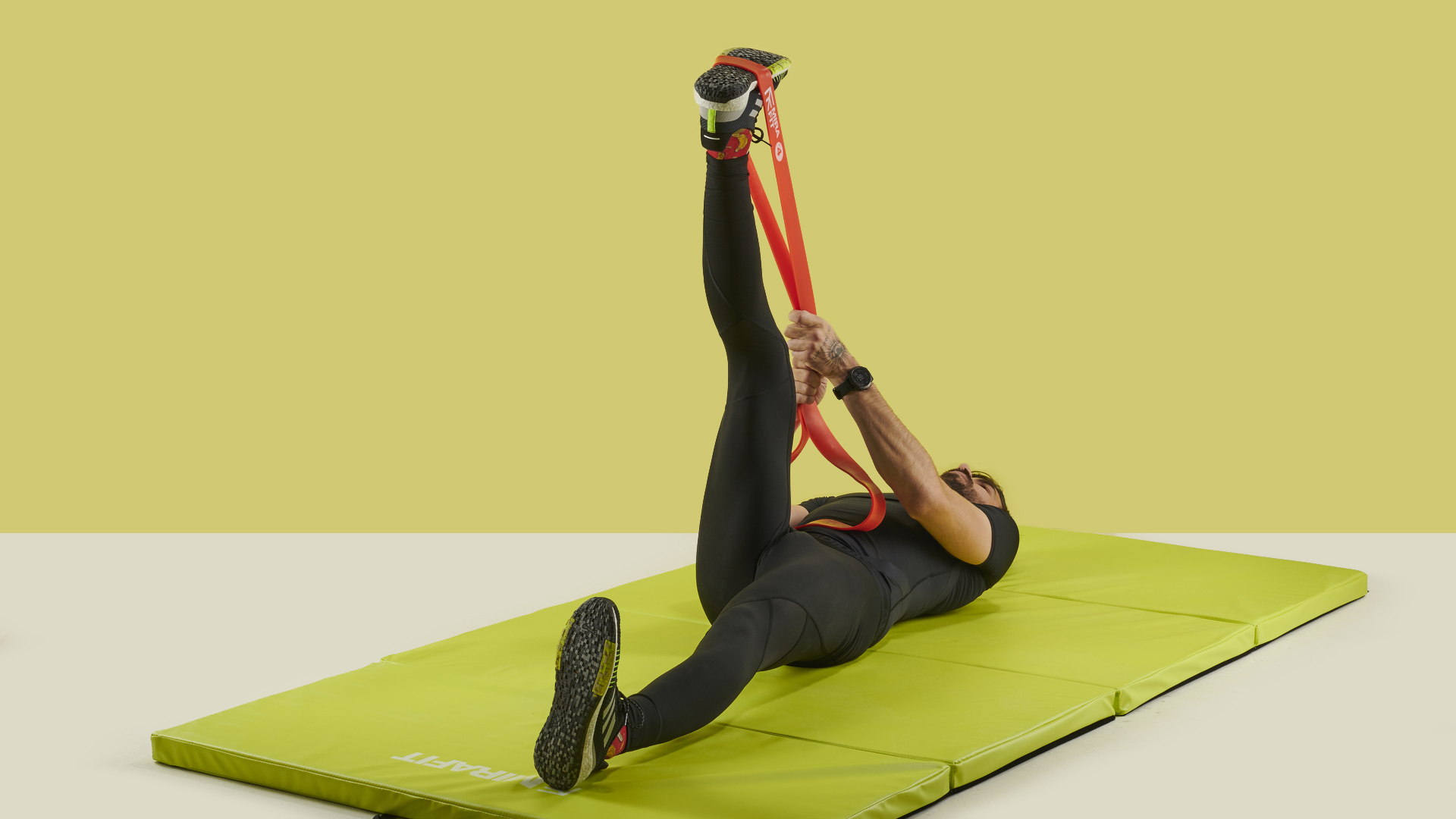
Make stretching an integral part of your workouts
Warm up and cool down
Although this workout uses plenty of cardio elements, you want to get ready even for those. Light jogging and stretching helps priming the muscles and your body for the upcoming exercises.
Stretching and relaxing tense muscles after the workout is also very beneficial. Use a foam roller and/or resistance bands, both of which can relieve muscle tension and
IMPORTANT: if you have any medical condition or experiencing pain of any sort – especially back pain – please consult a medical professional before you start working out. Some of the below exercises put a lot of stress on your lower back and if you are ever unsure how to perform them, get a PT or a trained athlete to show you the correct form.
Suunto 9 GPS Multisport Watch | Sale price £269.99 | Was £449 | Save £179.01 (39%) at Wiggle
Choose from 80 different sport modes and enjoy an up to 120 hours of battery life with GPS using the Suunto 9. This monster of a multi-sport smartwatch measures heart rate on the wrist as well as being water rated to 100 metres, making it the ultimate gadget in any serious triathletes' toolbox.
- Want to be fit for spring? Here’s why winter training is key to summer success
- Best winter running gear: tackle the elements with the best winter running shoes, winter running tops and more
Navy SEAL Fitness Test Workout
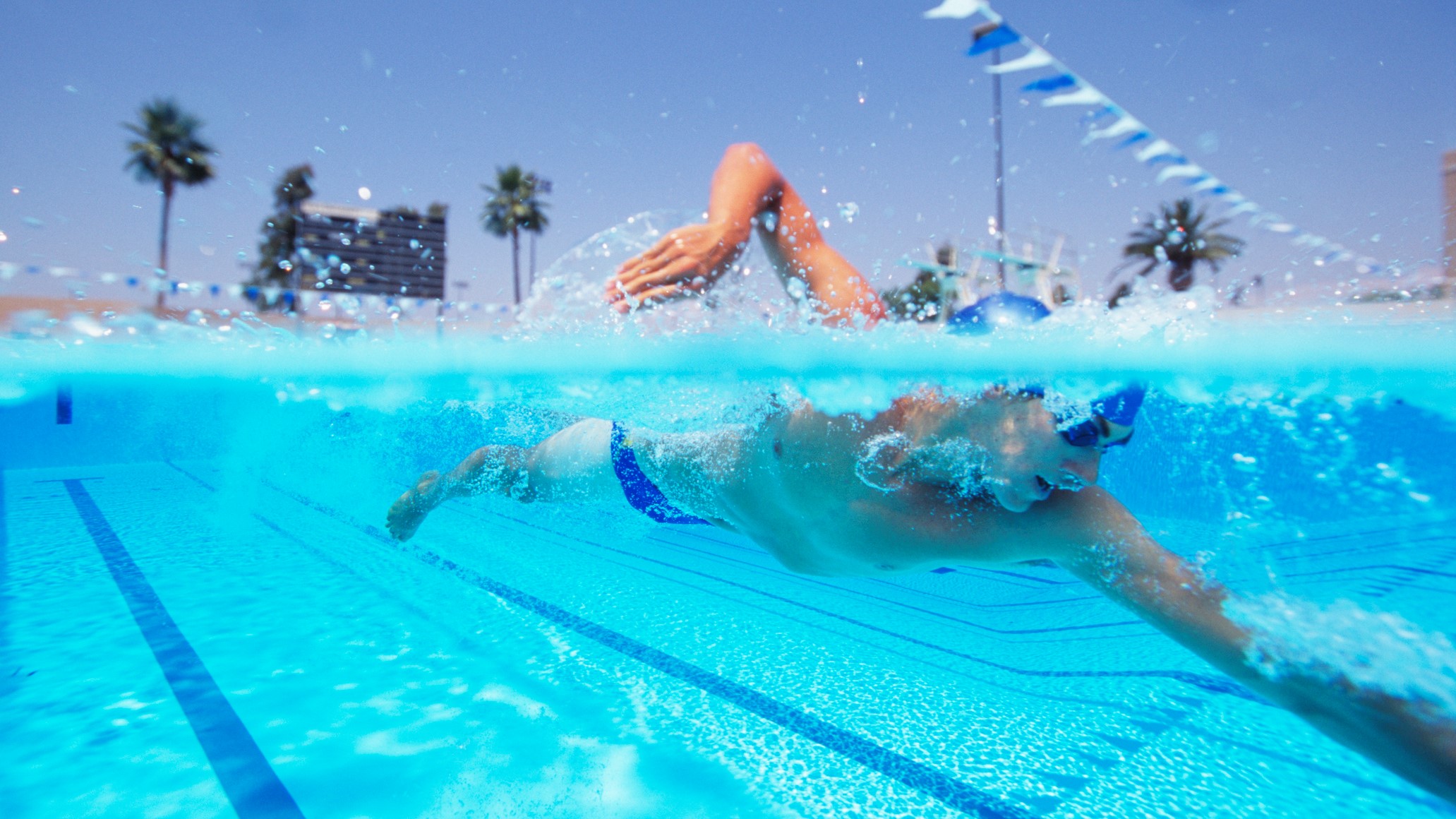
Swimming is good for your whole body. Period.
1 Swimming
Muscles worked: delts, lats, traps, triceps, biceps, abs, hams, glutes (all of them, really)
Time: swim continuously for half an hour
This exercise will most likely be performed separately from the rest of the exercises for practical reasons, but it's all for the better since adding a swim day to your workout calendar will introduce variety to your strength training.
Not only that, but swimming is good for your overall cardivascular health, is a joint-friendly sport and will make your body strong overall as well as more robust. Doing freestyle swimming will work your shoulders and lats and will give you that V-back you always wanted.
Make sure you warm up for your swims with some shoulder exercises, like rolling shoulder circles and arm circles. especially if you haven't swam for a while, you will feel your shoulders quite prominently in the upcoming days after the exercise if you don't warm up. Probably even if you do, but at least with warmup you can avoid injuries.
SKLZ Core Wheels Dynamic Strength & Ab Trainer | Buy it at Amazon for £36.27
Ab rollers are amazing tools to train your core and abs but the SKLZ Core Wheels go even further: train your lats and shoulders as well as your core with the dual-wheel rollers. Using the SKLZ Core Wheels can compliment your swimming training and using them even just for a few minutes will strengthen your shoulders significantly.
- Best triathlon bike: become an Ironman with the best tri and time trial bikes
- Best triathlon watch: track your swim, cycle and run with these advanced multi-sport smartwatches
- 5 beginner triathlon training mistakes and top tips to avoid them
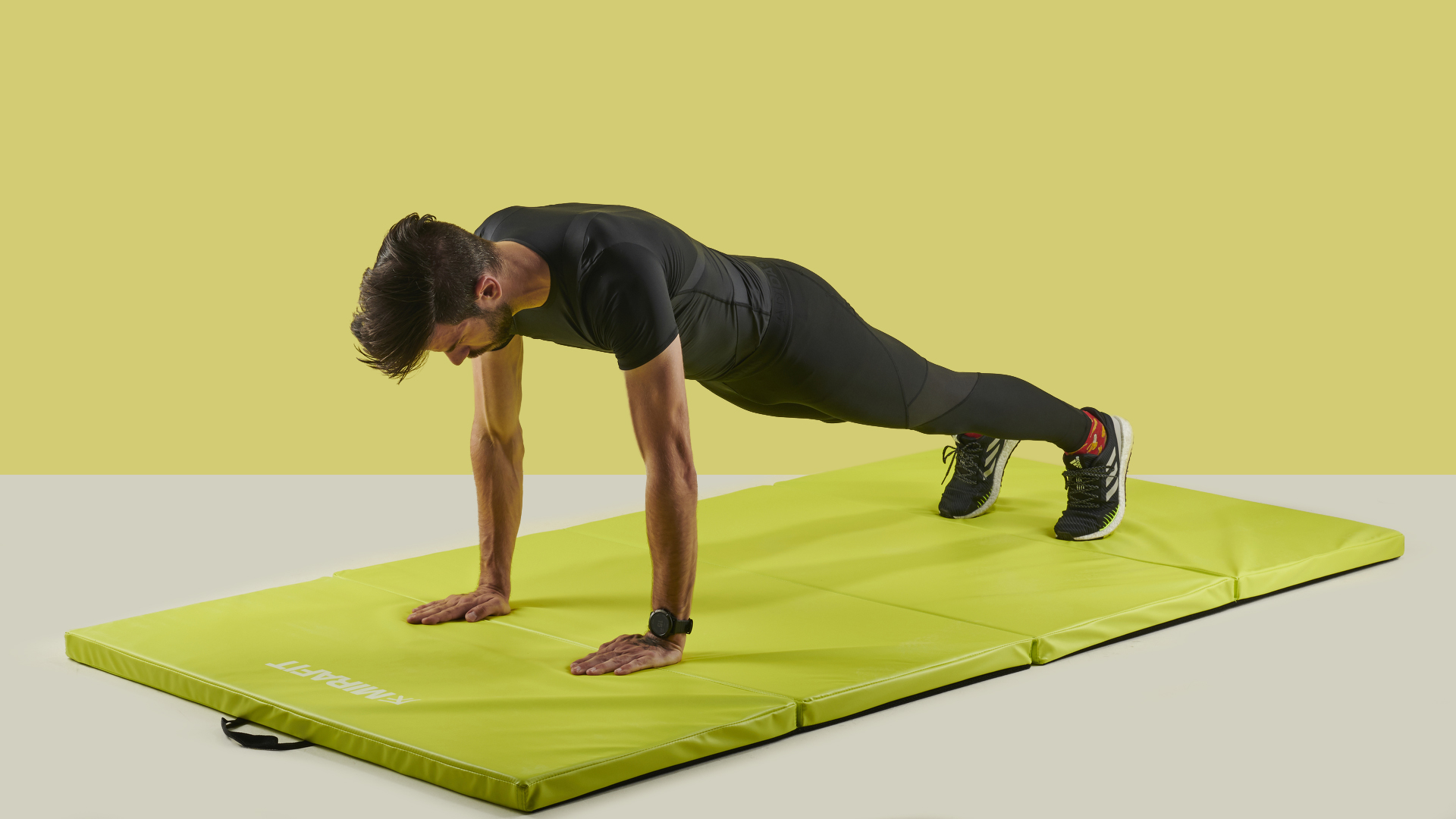
Keep your body straight as you bend your elbows and get as close to the ground as you can in the lowest position
2. Pushups
In depth: how to do a push-up
Muscles worked: pecs, triceps, core
Time: do as many as you can in two minutes/do 50 pushups in the least amount of sets possible
Starting position is arms extended and shoulder-width apart whilst you are facing the floor. Make sure your palms are directly under your shoulders on the floor. Core and glutes engaged, back straight.
At the lowest position, your nose should almost touch the floor and again, your body should be straight.
- Get a raw full body workout using bodyweight exercises only with this calisthenics workout for beginners
- The hardest calisthenics workout : fat burning is guaranteed with this workout... but it’ll hurt

Keep your back straight and pull with your abs
3. Situps
In depth: how to do ab crunches
Muscles worked: abs, obliques, core, lats
Time: do as many as you can in two minutes/ do 75 in the least amount of sets possible.
Don't try to do sit ups without leg support, that'll put way too much pressure on your back. You can get an under door crunch bar if you are working out at home or a sit up bench (or a multi-functional weights bench).
Also – and I can't tress this enough – don't have your hands behind your neck or head. Most people try to cheat doing sit ups by pulling their head with their arms. The only thing you'll achieve with that is spine injury and neck pain.
Keep you hands either on the side of your head or crossed in front of your chest. The former is better if your abs are not that strong just yet and you want a bit of momentum before your engage your core.
Either way, engage your core all the way through the movement and keep your back straight. By engaging your core and not using your hands/arms to help, you can avoid potential back injuries.
SIXPAD Electric Muscle Stimulation Training Gear | Prices from £175 at Amazon
SIXPAD training gear won't replace hard work but it can make it more effective. These cordless pads can effectively enhance muscle stimulation and can "help users achieve an 8% improvement in abdominal muscle size after 4 weeks alongside a balanced diet and exercise" – or so does SIXPAD claim. The percentage goes up to 12% after 8 weeks and many SIXPAD products can be used in other areas than just your abs.
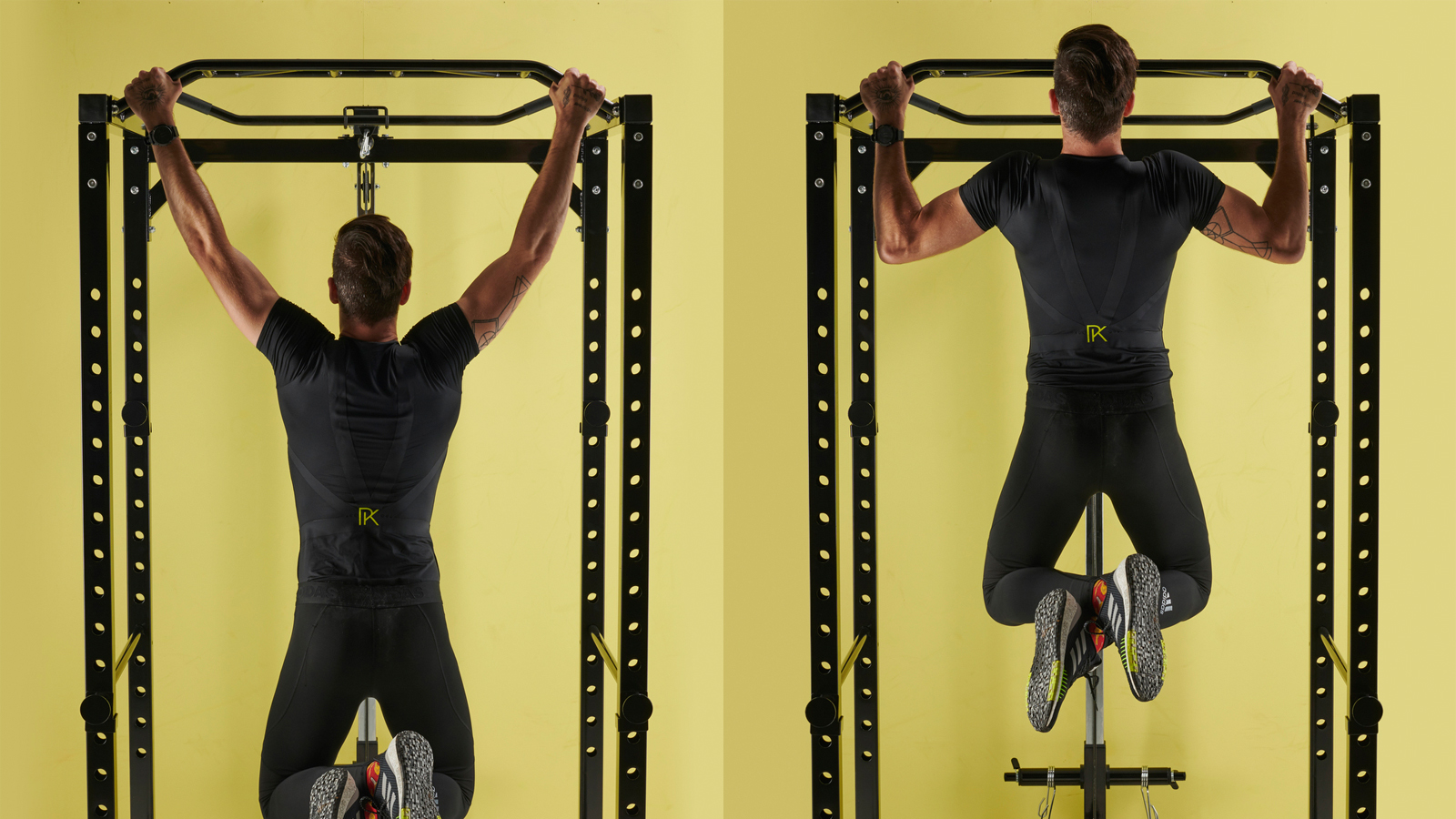
Shoulders should be in-line with wrist at the highest position
4. Pullups
In depth: best back exercises
Muscles worked: lats, traps, biceps
Sets/Reps: do as many as you can in one go
If you are exercising at home and unfamiliar with pullups, get one a door pull up bar and start doing pullups your legs resting on a chair. Please, please, make sure the bar is fitted properly and that it can support your bodyweight before you start hanging off it.
If you are frequenting the gym, you can use a pull up assist machine first. Same thing as doing a regular pull up, but you do it kneeling on a weighted pad.
Bodyweight pull ups are the next step up from supported leg pullups. If you really want concentrate on your lats, use a wide overhand grip. Chin ups use your arms muscles more (they are excellent nevertheless).

Not many exercises will work your lower body as well as running
5. Running
In depth: why you should try running
Muscles worked: quads, hams, glutes, calves
Time: run for half an hour
Put one feet in front of the other in a quick succession.
Jokes aside, to pass the test, you will need to achieve a 5 min/km pace, which is not a break neck speed but still sort-of brisk, so concentrate on landing softly and if you are indeed going for a half an hour run, do the first couple of kilometres in a less demanding .
Also, keep your chest open and shoulders wide as you run. Keeping your upper body straight means you won't compress your lungs (by slumping), which then can turn around more oxygen, which in turn can keep your muscles from tiring
Nike React Infinity Run | Buy it for £139.95 at Nike
The new Nike React Infinity Run was designed to reduce the risk of injury and make you faster, all in the same time. The wide forefoot platform and the all-new Flyknit upper will make your running sessions safer while the Vaporfly-like rocking mechanism will propel you forward without wasting much energy when you land.

Matt Kollat is a journalist and content creator who works for T3.com and its magazine counterpart as an Active Editor. His areas of expertise include wearables, drones, fitness equipment, nutrition and outdoor gear. He joined T3 in 2019. His byline appears in several publications, including Techradar and Fit&Well, and more. Matt also collaborated with other content creators (e.g. Garage Gym Reviews) and judged many awards, such as the European Specialist Sports Nutrition Alliance's ESSNawards. When he isn't working out, running or cycling, you'll find him roaming the countryside and trying out new podcasting and content creation equipment.
